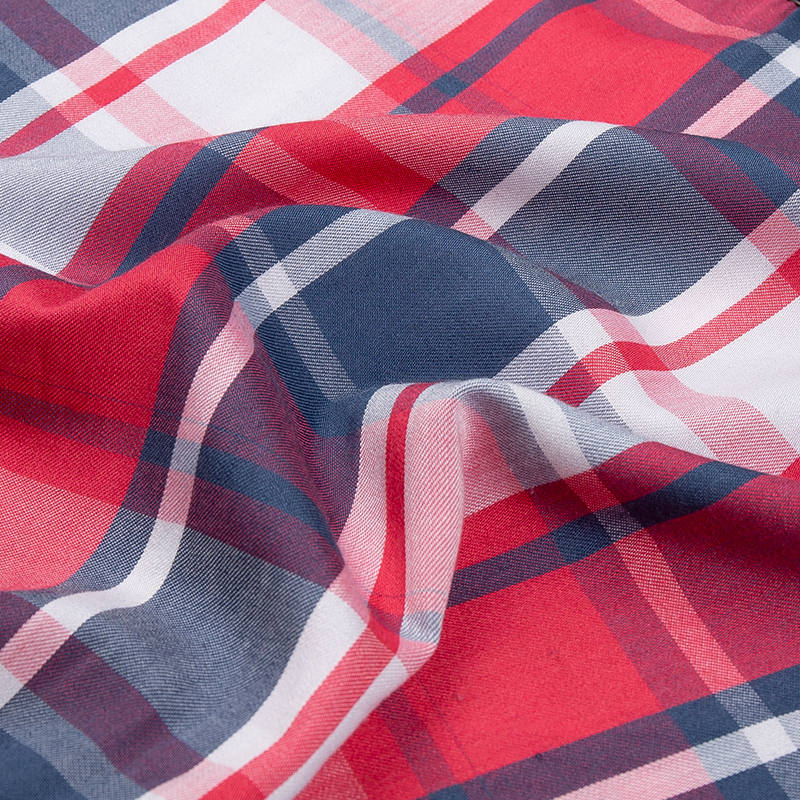When it comes to sustainable textiles, yarn-dyed rayon fabric often finds itself at the center of the conversation. This versatile material, made from regenerated cellulose fibers, has gained popularity for its softness, affordability, and ability to mimic natural fibers like cotton. However, as consumers become more eco-conscious, understanding the environmental footprint of this fabric is crucial. From its life cycle assessment (LCA) to innovations in production methods, let’s dive into what makes rayon a double-edged sword in the world of sustainable fashion.
Life Cycle Assessment (LCA): The Hidden Costs of Rayon Production
The journey of yarn-dyed rayon begins with wood pulp, typically sourced from trees like eucalyptus, beech, or bamboo. While these raw materials are renewable, the transformation process into viscose fibers involves significant resource consumption. A detailed life cycle assessment reveals that traditional rayon production is energy-intensive and relies heavily on chemicals like carbon disulfide and sodium hydroxide. These substances, if not managed properly, can lead to water pollution and harm ecosystems near manufacturing facilities.
However, advancements in technology are helping reduce these impacts. For instance, closed-loop systems, which recycle chemicals back into the production process, have emerged as a game-changer. Brands using eco-friendly alternatives like EcoVero—a type of sustainable viscose—can significantly lower their environmental footprint. By choosing responsibly produced rayon fabrics, manufacturers can align with consumer demand for greener options while maintaining the luxurious feel of yarn-dyed rayon.
Alternative Innovations: Rethinking Traditional Viscose
While traditional viscose remains widely used, newer iterations of regenerated cellulose fibers are setting higher sustainability standards. Modal and lyocell, for example, are gaining traction due to their reduced environmental impact. Lyocell, often marketed under the brand name Tencel, uses a non-toxic solvent called N-methylmorpholine N-oxide (NMMO), which is almost entirely recyclable. This contrasts sharply with conventional viscose processes, where chemical waste is a major concern.
For designers and brands looking to incorporate yarn-dyed rayon into their collections, opting for these innovative fibers can make a significant difference. Not only do they offer enhanced softness and durability, but they also appeal to eco-conscious consumers who prioritize transparency in supply chains. Moreover, blending these advanced fibers with other sustainable materials, such as organic cotton or recycled polyester, opens up exciting possibilities for creating high-performance textiles without compromising on ethics.

Consumer Awareness: Driving Change in the Textile Industry
As awareness grows about the environmental implications of textile production, consumers are increasingly scrutinizing the origins of their clothing. This shift has put pressure on manufacturers to adopt cleaner practices when producing fabrics like yarn dyed rayon. Certifications such as FSC (Forest Stewardship Council) ensure that the wood pulp used in rayon comes from responsibly managed forests, while OEKO-TEX® Standard 100 guarantees that the final product is free from harmful substances.
Brands that embrace these certifications not only build trust with their customers but also contribute to a larger movement toward sustainability. For instance, many fashion labels now highlight their use of eco-viscose or biodegradable rayon blends in marketing campaigns, emphasizing their commitment to reducing waste and conserving resources. This trend underscores the importance of educating both producers and buyers about the benefits—and challenges—of integrating sustainable rayon fabrics into everyday products.
A Balanced Perspective: Weighing the Pros and Cons
Ultimately, the story of yarn-dyed rayon fabric is one of balance. On one hand, it offers unparalleled comfort, vibrant color retention, and versatility, making it a favorite among designers and consumers alike. On the other hand, its traditional production methods raise valid concerns about resource depletion and pollution. By embracing technological innovations and prioritizing sustainable sourcing, the textile industry can mitigate these drawbacks while continuing to harness the unique qualities of rayon.
Whether you’re a manufacturer exploring new materials or a shopper seeking eco-friendly options, understanding the nuances of this fabric empowers you to make informed decisions. After all, the future of fashion lies not just in aesthetics but in how we care for our planet—one thread of rayon at a time.



 English
English Español
Español Feb 21,2025
Feb 21,2025














 +86-519-86503571
+86-519-86503571
 Phone: +86-13218666905
Phone: +86-13218666905 Tel: +86-0519-86503571
Tel: +86-0519-86503571 Fax: +86-0519-86508551
Fax: +86-0519-86508551 E-mail:
E-mail: 